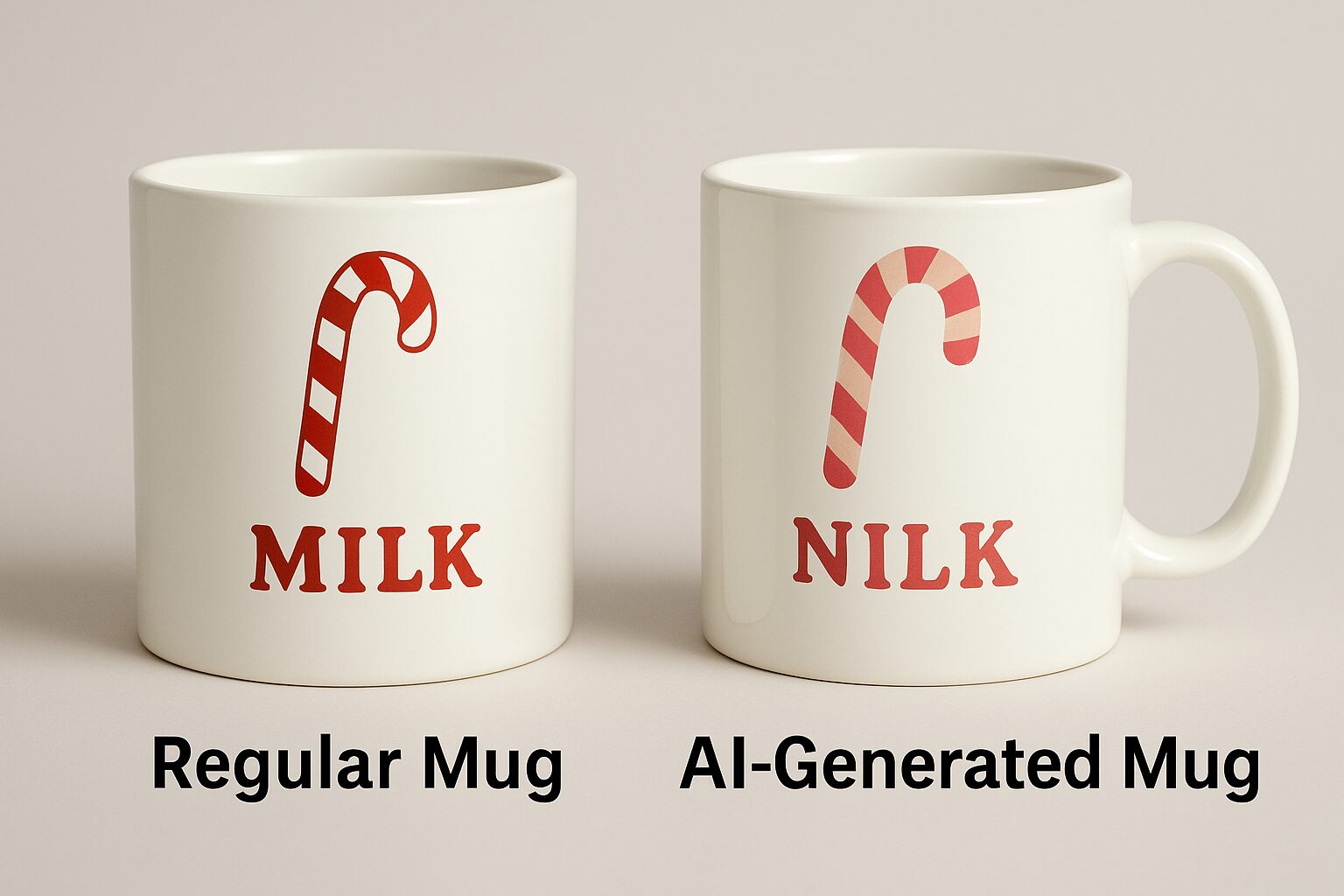We are heading into Black Friday and Cyber Monday and the shelves are already packed with a new wave of AI generated merchandise. Holiday décor, mugs, shirts, toy packaging, all produced fast, cheap and unchecked. It is not just low quality, tt is careless and that is the real problem.
When companies do not bother to catch “milk” turning into “nilk,” or Santa having five fingers and no thumb, that tells you everything about the level of oversight happening behind the scenes. If they are missing the basics, what else are they pushing through?
This is not fearmongering, it is realism because AI is not the danger, the people using it without reviewing anything are.
Stores Are Stocking Bad AI Merch and Hoping Consumers Look the Other Way
AI art is not new but the speed and scale of its use this season is different. Retailers are filling shelves with designs that are “almost right,” which still means wrong. Things like:
- Yellow tinted illustrations
- Candy canes with random extra colors
- Labels that switch fonts mid word
- Ingredient lists that turn into pictures of bottles inside bottles
- Seasonal patterns that shift out of alignment just enough to look off
The bigger issue is that nobody is checking any of it.
There is a difference between “Made in China” and “knockoff quality.” What we are seeing now is knockoff of the knockoff, AI generated and never reviewed by a real person before mass production. That is not innovation, that is negligence.
AI Toys Are the Real Red Flag This Season
The low-quality holiday décor is annoying, but the AI toys are where this gets serious. This year you are going to see many toys marketed as “smart,” “interactive,” or “powered by AI.” Talking stuffed animals. “Learning companions.” Cute devices that claim they can grow with your child. It all sounds harmless until you take a deeper look. Advocacy groups are warning that some of these toys are already showing disturbing behavior:
- Some engage in explicit conversations
- Some encourage unsafe actions or suggest dangerous objects
- Some are designed to gain a child’s trust by saying they can “keep secrets”
- Some collect video, audio, facial recognition, and gesture data without parents realizing it
Fairplay, a major children’s safety organization, says these AI toys are being marketed even to infants and can displace the real human interaction that children need. They also warn that these toys are intentionally designed to feel like a “friend” or “confidant,” which makes young children more vulnerable.
It’s not just cheap merch anymore but devices that actively shape your child’s behavior without you knowing what they are saying or storing.
This is where “not checking the work” stops being a quality control issue and becomes a safety issue.
Small AI Mistakes Show Why Bigger Risks Will Go Unchecked
This is the slippery slope people underestimate. If retailers do not double check:
- A Santa with no thumb
- A mug that says “nilk”
- A bottle image inside a bottle inside a bottle
Why would they suddenly become responsible when it comes to AI powered toys, medical information, legal guidance or educational tools?
It is all the same pattern:
- Use AI to save time and money
- Skip the review process
- Mass produce whatever the model creates
That is how mistakes become normal, how bad information becomes fact. and that is how dangerous products end up in people’s homes. The stakes rise every time a company decides “good enough” is good enough.
Just Know
Use AI if you want, but do not trust anything you do not review and do not assume retailers are reviewing it for you; they are clearly not.
This holiday season, shop smart, read labels, double check toys and avoid bringing home something you do not understand.
_________________________________________________________________________________________________________________
Shaunta Garth is a Strategic Communications & Visibility Architect specializing in digital storytelling, media strategy and public affairs.
